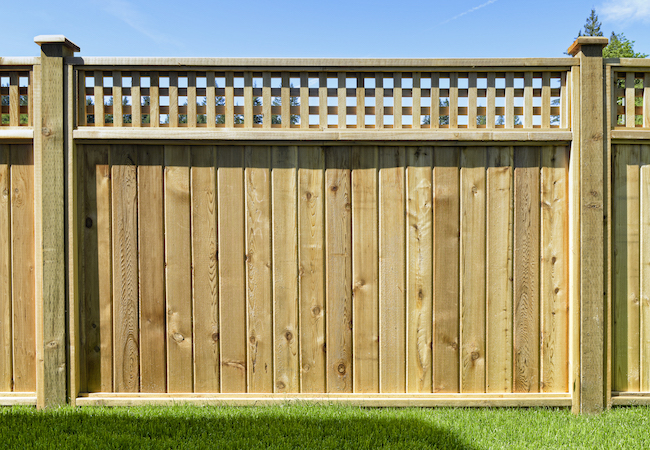All Categories
Featured

When thinking about installing a fence on your building, among one of the most essential steps is to understand whether you need a permit. Fence installations commonly require a permit to make certain that the framework abides by regional zoning legislations, building codes, and security criteria. The particular permits required can differ depending upon your location, the kind of fencing you plan to set up, and the height or placement of the fence. Right here's an overview to aid you navigate the process of getting a fence authorization and make certain that your installment is problem-free and lawful.
Why You Need a License for a Fencing Setup. A fence authorization is needed to make certain that the installment satisfies local regulations. The permit procedure aids neighborhood authorities confirm that your fence does not interfere with website traffic presence, respect your property lines, or go against height limitations. It also makes certain the safety and security of the framework, so it does not posture a danger to you, your neighbors, or the general public. Installing a fencing without an authorization can cause fines, elimination of the fencing, or hold-ups in building and construction, so it's necessary to check whether a permit is called for prior to beginning your job.
Kinds Of Licenses You Might Require. There are a couple of common types of permits you may need for a fence installment:
Structure License. A building license is the most usual authorization needed for fence installments. This permit makes certain that the fencing fulfills security standards and is created according to neighborhood building codes. A structure license is normally required if the fence exceeds a particular height (usually 6 feet), is made from certain products, or lies near a public walkway or road.
Zoning License. A zoning authorization might be needed to verify that your fencing abides by neighborhood zoning regulations. Zoning policies can determine where a fencing can be positioned on your property, how high it can be, and whether it is allowed certain locations (such as along residential or commercial property lines or ahead lawns) Some districts have regulations limiting the height of fences in the front lawn to guarantee presence for vehicle drivers and pedestrians.

Setback Permit. If you are developing a fence near your residential property line or close to a road, you may require a trouble permit. An obstacle describes the range a framework, including fencings, have to be from the building line. Obstacle regulations differ by place, and guaranteeing that your fence is positioned appropriately can prevent problems with neighbors and stay clear of violations.
Homeowner Organization (HOA) Authorization. You may require approval from them in addition to regional authorizations if you live in a community regulated by a Homeowner's Association (HOA) HOA rules typically cover the sort of materials, height, design, and shade of fencings. Also if your city government doesn't call for a license, your HOA might still have certain guidelines that need to be adhered to.
Just How to Get a Fencing Permit. To get a fence permit, you'll need to contact your local building department or preparation office. The application procedure usually entails submitting a form, paying a fee, and sending a website plan of your home that reveals the suggested location of the fencing. You might additionally need to consist of information concerning the products, elevation, and style of the fence.
Sometimes, a neighborhood authorities might require to evaluate your home before accepting the authorization. Once the permit is given, you will certainly be accredited to wage your fencing setup.
When Is a License Not Needed? In certain scenarios, an authorization may not be needed. These scenarios can include:
Low Elevation Fences: In several locations, fences that are below a particular height (commonly 3 to 4 feet) may not require an authorization, specifically if they are put in the yard or various other non-visible locations.
Fence Replacement: If you're changing an existing fencing with the very same elevation and product, some locations might not call for a brand-new authorization.
Non-Obtrusive Fencings: Ornamental or short-term fences, such as those utilized for gardening or landscaping purposes, might not call for authorizations as long as they are reduced and not irreversible.
Nonetheless, it's vital to contact your neighborhood zoning office or building division, as laws can vary by jurisdiction.
Consequences of Not Acquiring a Permit. Failing to get the necessary authorizations can cause substantial repercussions. These consist of penalties, forced removal of the fencing, or even delays in building. Furthermore, if your fence doesn't meet neighborhood guidelines, you could encounter legal concerns with next-door neighbors or local authorities.

Verdict. By ensuring that you adhere to neighborhood regulations and get the necessary permits, you can stay clear of costly errors and make certain that your fence is legitimately compliant. Examine with your neighborhood structure department, HOA, and zoning workplace to establish what authorizations are required for your specific fence project.
Latest Posts
Explore Exclusive Auto Repair Deals in Chicago at Montclare Auto Repair
Published May 29, 25
1 min read
The Benefits of Consistent Vehicle Maintenance at Montclare Auto Repair Keeps Your Wallet Happy
Published May 28, 25
1 min read
Boost Your Residential Or Commercial Property with Overhead Door Systems
Published May 25, 25
1 min read
More
Latest Posts
Explore Exclusive Auto Repair Deals in Chicago at Montclare Auto Repair
Published May 29, 25
1 min read
The Benefits of Consistent Vehicle Maintenance at Montclare Auto Repair Keeps Your Wallet Happy
Published May 28, 25
1 min read
Boost Your Residential Or Commercial Property with Overhead Door Systems
Published May 25, 25
1 min read